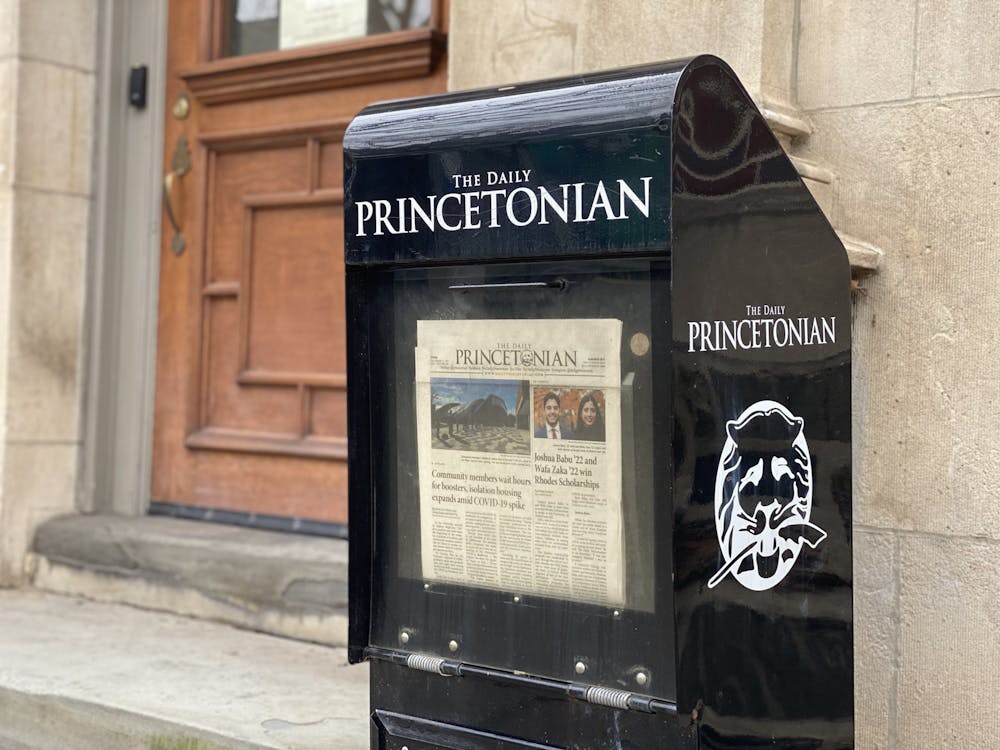Coming into Princeton, I knew I wanted to get involved with community service. At the Activities Fair, I spent most of my time under the Pace Center for Civic Engagement tent. Every table seemed to advertise tutoring opportunities, but few required experience. Representatives from several of the groups told me that the Pace Center is planning on holding more training workshops for tutors this year. The introduction of more, and potentially different, tutor training raises the question: What is good tutoring?
In high school, I worked as a geometry tutor. My student's father hired me to be her tutor during her freshman year. She was a good student. She paid attention in lecture and asked questions when she didn’t understand. She took thorough notes on every lesson, and was always excited to learn. Teaching her was fulfilling.
Yet once the next school year started, I learned that she was searching for another tutor. Now she needed help with Algebra II and chemistry.
I felt like a failed tutor. I wasn’t bothered by the fact that she needed help. I was bothered by the idea of her always depending on a tutor to explain every new subject. In today’s volatile world, new skills and paradigms constantly arise. She can’t depend on someone to always be there to walk her through new concepts.
School teaches us material, but it should also teach how to learn.
Bad tutoring can kill that skill. Tutoring may place too much of a burden on the tutor to teach and not enough on the student to learn. When my father taught me algebra at home during elementary school, I could simply sit back and let him explain everything. My father would ask me questions to engage me. Sometimes I was too lazy to respond. After an awkward pause, Dad would explain the answers in the end.
I became accustomed to this constant feedback. When I began learning on my own, I checked the answers whenever I was faced with a problem I couldn’t do in five seconds. I was afraid of situations I hadn’t seen before.
As a tutor, I taught through the same one-sided lectures — it seemed natural for me to simply explain all of the material. Yet I found that tutoring style inadequate. My student could listen as though her life depended on it, but she always seemed completely lost when we moved to a new concept.

Real learning requires ownership and discovery, both of which entail struggle. The one- or two- hour space of a tutoring session eliminates the opportunity to struggle. Both the tutor and student see even the slightest confusion as a failure to be quickly remedied by a neat explanation. No one trusts the student to reason it out herself.
This isn’t to say that all tutoring is bad — everyone needs help at some point. Rather, it means the tutor shouldn’t help the student every single step of the way. Teaching the answer before the student sees the question is absurd.
What is good tutoring?
Good tutoring should supplement good learning. The best learning comes from experiences. Building projects, essays, speeches and challenge problems. These learning experiences require failure. Students won’t remember “SOHCAHTOA”, but they’ll remember trying to use angles to measure the distance between two cities on a map. They won’t remember being told to outline their ideas; they’ll remember getting halfway through an essay and being completely lost about what to say next.

Here is the tutor’s biggest challenge: He must believe in the student’s ability. He must show the student that those wayward ideas, those dead ends, that unfinished concluding paragraph prove that the student is growing. He must always be positive, but never complacent.
This isn’t to say that tutors should leave the students completely lost. But instead of spoon-feeding material, the tutor must guide the student in approaching new situations. Outline ideas. Write down all the information. Look at trivial cases. And finally, focus on the skills the material teaches. History teaches us to construct arguments. Chemistry trains us to look at control variables and limiting factors. Math teaches us to play with abstract ideas.
This model only works if both the tutor and student are invested in the learning. The tutor must show that the material merits the effort. How is this fun? Why does this matter? The student must be willing to work on the material independently at some point. Students doesn’t need to understand everything immediately, but it’s important for them to take ownership of their learning.
In “The Flat World and Education: How America’s Commitment to Equity Will Determine Our Future”, Linda Darling Hammond describes an educational study that randomly assigned at-risk seventhgraders to remedial, average and honors math classes. It found that those assigned to honors classes, with the more demanding and engaging curriculum, outperformed all other students from similar backgrounds. While the other classes focused on teaching rote skills, memorization, and test-oriented tasks, the honors classes allowed the students to synthesize, draw connections, and make the material their own.
“Honors” is a self-fulfilling prophecy. Tutoring should be honors: it should believe kids are smart enough not just to consume facts, but to use them. Tutoring shouldn’t leave students unsupported, but it should strive to make them completely independent. The kids will rise to that expectation.
Pace Center groups should train their tutors in the image of this ideal tutor: personable, engaging and, most of all, believing. We best serve lower-performing youth by expecting more of them and giving them ownership of their learning. Give a kid an answer, and you help him with one question. Teach a kid to think, and you help him for a lifetime.
Jonathan Lu is a freshman fromFremont, Calif. He can be reached at jhlu@princeton.edu.







